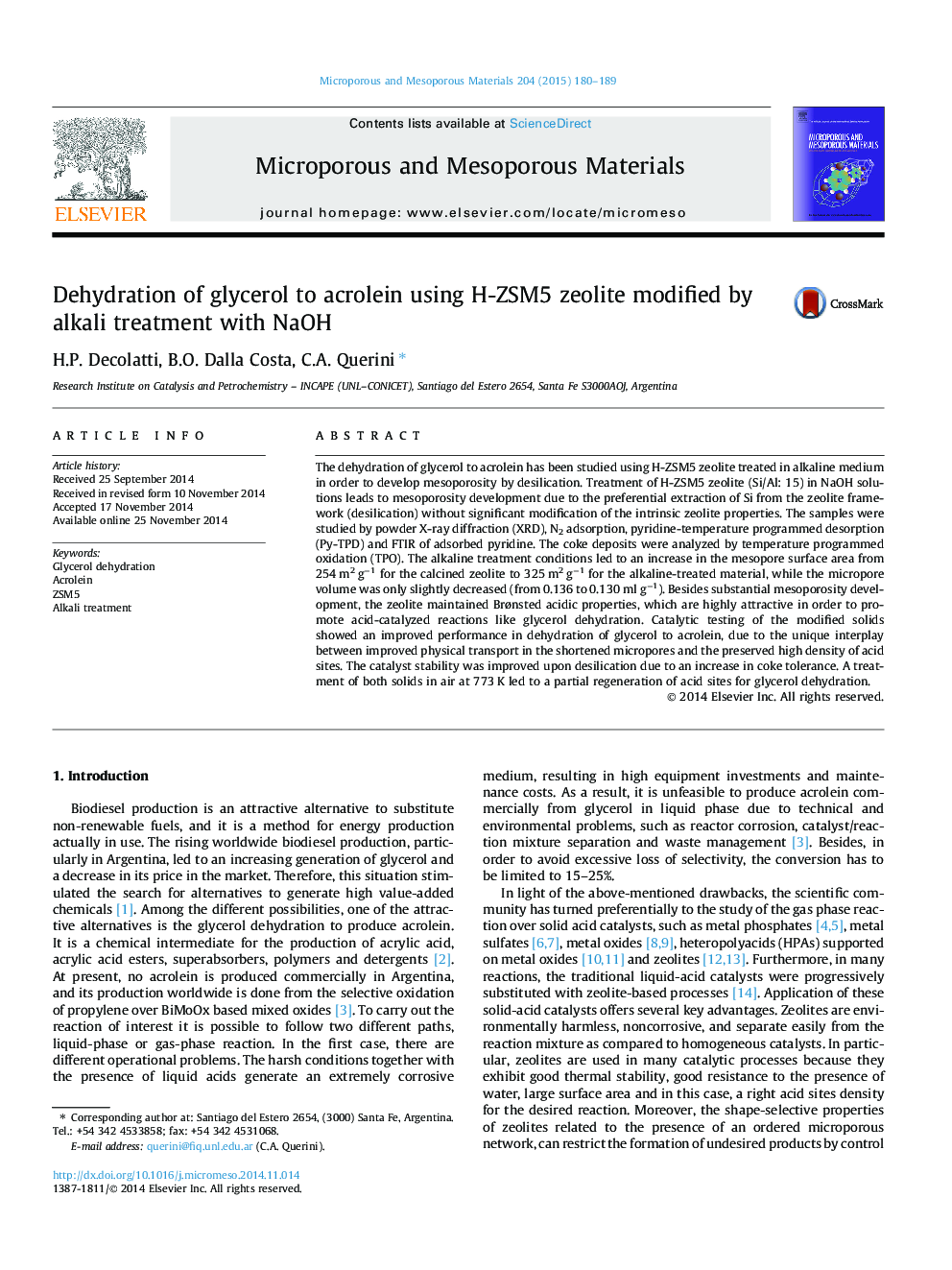| کد مقاله | کد نشریه | سال انتشار | مقاله انگلیسی | نسخه تمام متن |
|---|---|---|---|---|
| 72749 | 49032 | 2015 | 10 صفحه PDF | دانلود رایگان |

• Alkaline treatment of ZSM-5 led to an increase in the mesoporosity.
• ZSM-5 catalyst treated with NaOH was more active for glycerol dehydration to acrolein.
• Accessibility to acid sites increased due to the alkaline treatment.
• Preferential dissolution of silicon from the framework takes place during the treatment with NaOH.
The dehydration of glycerol to acrolein has been studied using H-ZSM5 zeolite treated in alkaline medium in order to develop mesoporosity by desilication. Treatment of H-ZSM5 zeolite (Si/Al: 15) in NaOH solutions leads to mesoporosity development due to the preferential extraction of Si from the zeolite framework (desilication) without significant modification of the intrinsic zeolite properties. The samples were studied by powder X-ray diffraction (XRD), N2 adsorption, pyridine-temperature programmed desorption (Py-TPD) and FTIR of adsorbed pyridine. The coke deposits were analyzed by temperature programmed oxidation (TPO). The alkaline treatment conditions led to an increase in the mesopore surface area from 254 m2 g−1 for the calcined zeolite to 325 m2 g−1 for the alkaline-treated material, while the micropore volume was only slightly decreased (from 0.136 to 0.130 ml g−1). Besides substantial mesoporosity development, the zeolite maintained Brønsted acidic properties, which are highly attractive in order to promote acid-catalyzed reactions like glycerol dehydration. Catalytic testing of the modified solids showed an improved performance in dehydration of glycerol to acrolein, due to the unique interplay between improved physical transport in the shortened micropores and the preserved high density of acid sites. The catalyst stability was improved upon desilication due to an increase in coke tolerance. A treatment of both solids in air at 773 K led to a partial regeneration of acid sites for glycerol dehydration.
Figure optionsDownload as PowerPoint slide
Journal: Microporous and Mesoporous Materials - Volume 204, 1 March 2015, Pages 180–189